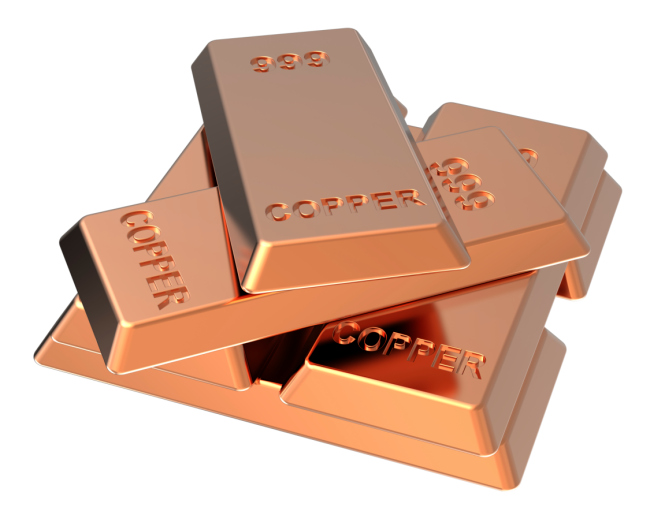Commodities & Metals
Could the Worst Be Over for Copper and Freeport-McMoRan?
Published:
For weeks, people who follow copper and the stocks of copper producers have been wringing their hands as prices have slipped ever lower, finally hitting a 44-month low Wednesday morning. Given what happened later in the day, maybe there is a little hope.
After Tuesday, copper was down more than 13% for the year. The iPath Dow Jones-UBS Copper Subindex Total Return (NYSEMKT: JJC) exchange traded fund (ETF) was down 13.5%, and Freeport-McMoRan Copper & Gold Inc. (NYSE: FCX), one of the largest copper producers, was down 16.2%.
The declines had everything to do with the worries about slowing growth in Europe, the United States and, especially, China. Copper is one of the key industrial metals, used in wiring, plumbing and a host of other products. China has been importing 40% of the total world production, partly to meet its enormous needs. Also, many investors have bought copper to use as collateral on bank loans.
And when China’s growth slowed, copper started to fall — and fall hard.
Wednesday, the decline abruptly stopped, possibly because the Federal Reserve said there was “sufficient underlying strength in the broader economy to support ongoing improvement in labor markets conditions.”
Copper for May delivery had fallen to as low as $2.877 a pound, its lowest level in since 2010, by mid-morning, in part on news that a Chinese real estate development company was collapsing. When the market turned, the metal ended the day up $0.036 to $2.987 a pound.
The copper ETF fell to $34.89 but finished up 0.8% to $36.13.
Freeport-McMoRan saw a 2.5% decline in the morning briefly turn into a 0.7% gain. Freeport ended down 1.8% to $31.07, caught in the Janet Yellen-induced sell-off that slammed markets. Still, the close was better than the day’s low. We should note that the rebound may also have been due to traders’ deciding the metal was too cheap to pass up.
In fact, the relative strength index of copper, a measure of momentum, had dropped under 30, which strongly signals it was oversold, Bloomberg noted. Freeport-McMoRan’s RSI had hit 30 last week, as had the RSI for the copper ETF.
So, the technically oriented traders were looking for a rebound, and they got it. Will they get more? There is a lot that people who watch China’s economy do not know about, such as just how much copper was used as collateral for loans.
In Freeport’s case, shipments from its giant mine in Indonesia are on hold while it settles a tax dispute with the government. Also, it borrowed heavily to buy two oil companies in 2013 and had total debt of some $20 billion at the end of the year. While the company has pledged to cut that level to $12 billion by the end of 2016, as Trefis Team noted on Forbes, Freeport needs to realize $3.25 a pound for its copper.
The rebound may not mean it is time for investors to look at, say, Freeport, the metal itself or the copper ETF. But Wednesday may have been a signal to start watching.
Another battered copper player is Southern Copper Corp. (NYSE: SCCO). After a 2.7% drop on Thursday, its 52-week range is $24.50 to $37.63. The consensus analyst price target from Thomson Reuters is $33.91 for Southern Copper.
Credit card companies are pulling out all the stops, with the issuers are offering insane travel rewards and perks.
We’re talking huge sign-up bonuses, points on every purchase, and benefits like lounge access, travel credits, and free hotel nights. For travelers, these rewards can add up to thousands of dollars in flights, upgrades, and luxury experiences every year.
It’s like getting paid to travel — and it’s available to qualified borrowers who know where to look.
We’ve rounded up some of the best travel credit cards on the market. Click here to see the list. Don’t miss these offers — they won’t be this good forever.
Thank you for reading! Have some feedback for us?
Contact the 24/7 Wall St. editorial team.